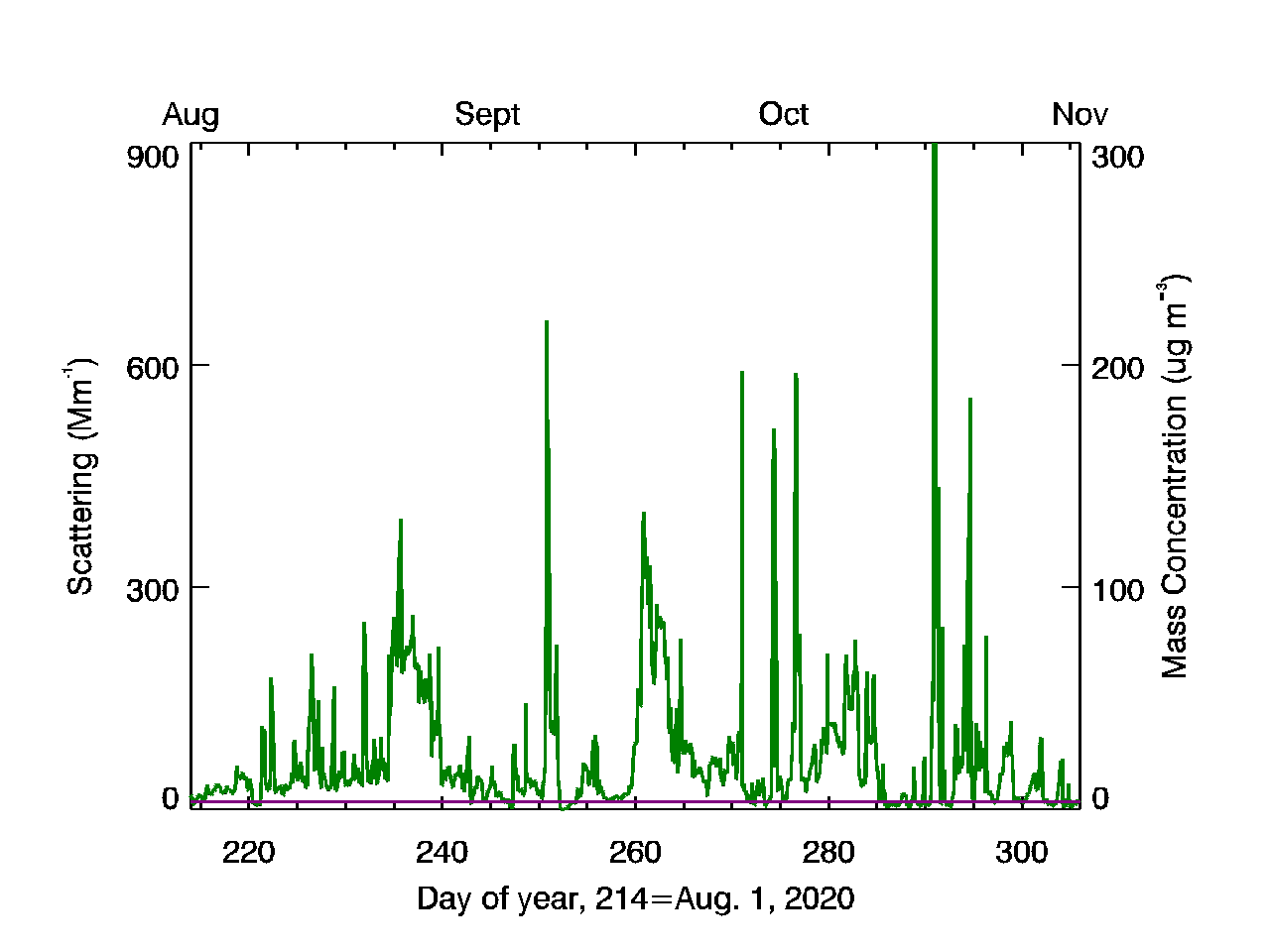
Purple line is typical summertime conditions in Boulder.
Green line is conditions measured during the various fire events.
The short, large spikes are due to more local fires while the broader peaks are most likely due to regional or west coast fires.
2020 was a severe year for fires across the western US. Colorado experienced two of its largest fires in state history (The Cameron Peak fire and the East Troublesome fire) along with multiple other fires throughout summer and fall. Thousands of structures were destroyed leaving people homeless, wildlife was displaced and smoke blue hundreds of miles downwind, severely affecting air quality.
Fire impacts were felt in Boulder due to local, regional and west coast conflagrations. The first fires to cause 2020 air quality issues in Boulder and along the Front Range were the Grizzly Creek and Pine Gulch fires near Grand Junction on August 13. That was quickly followed by more Colorado fires closer to Boulder. The Cameron Peak fire began on August 15, 2020 and was finally contained in November 2020. The Cameron Peak fire, which is the largest fire in Colorado history, burned on the north edge of Rocky Mountain National Park. Depending on which way the wind blew, Boulder was severely impacted or not at all impacted by this fire. NASA images shows a large smoke plume from the Cameron Peak fire extending east for 100s of miles in October - 2 months after the fire began.
The East Troublesome fire in NW Colorado and the Calwood fire started around the same time (mid-October). The East Troublesome fire was the second largest in state history and burned into November 2020. Smoke from fires along the US west coast, from southern California to northern Oregon also made its way across the US throughout late summer and early autumn, likely impacting Colorado on the way to the US east coast.
The Calwood fire was much smaller and shorter lived than the Cameron Peak and East Troublesome fires, but it resulted in the loss of at least 26 homes. Its proximity to Boulder also led to poor air quality in the city.

Smoke plume from Calwood fire on October 17, 2020 (photo by Patrick Sheridan)
Colleagues in the NOAA GML carbon cycle group temporarily deployed a Picarro gas concentration analyzer at the Table Mountain site near Boulder to provide CO, CO2, and CH4 concentrations collocated with the NFAN measurements. This allowed us to analyze how aerosol/gas relationships change during background conditions compared to different types of smoke events. Preliminary analyses show CO is very well correlated with aerosol absorption and scattering. However, it is clear that aerosol/gas relationships change at high absorption Ångström exponent values (possibly related to smoke plume age and/or origin). A back trajectory analysis is the next step in helping to identify plume age and origin to further diagnose properties of smoke aerosols.

Relationship between aerosol absorption coefficient and CO concentration colored by absorption Angstrom exponent (plot by Lauren Schmeisser)
